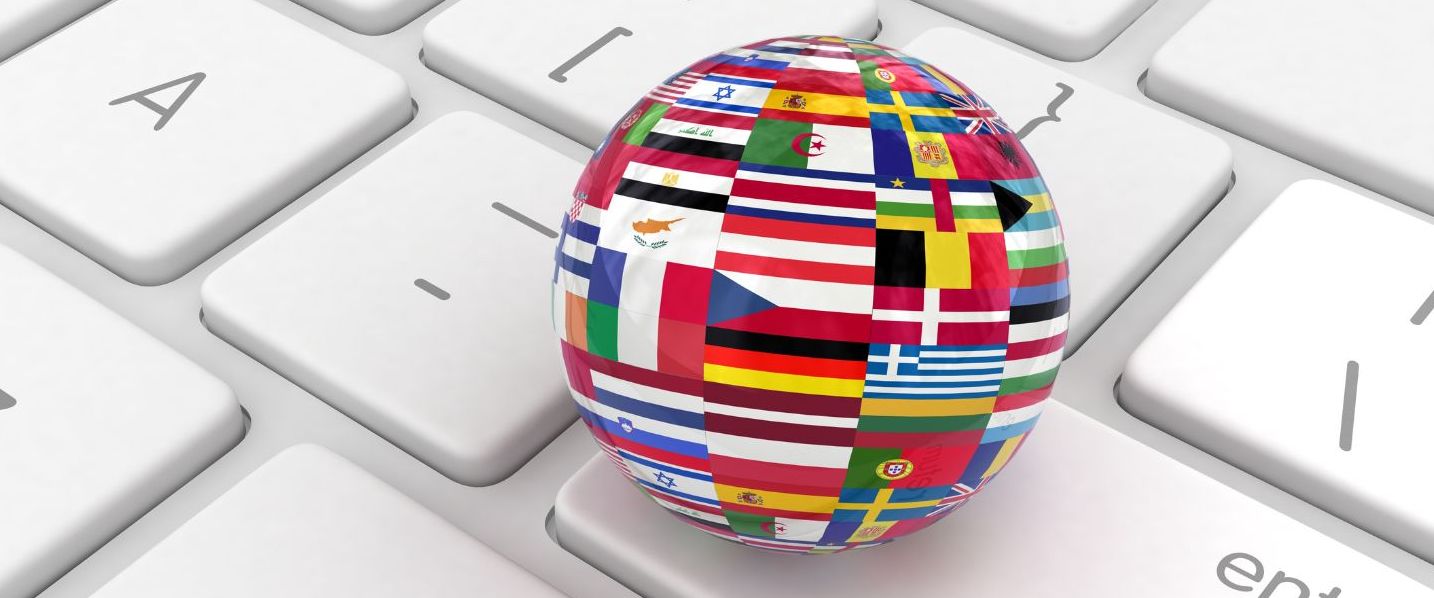Multilingual Video Captions: Handling Diverse Content
Can Captioning Services Handle Multiple Languages in a Single Video?
In today’s global environment, the demand for multilingual content is on the rise. Videos, being a dominant form of communication, need to cater to audiences who speak different languages. This brings us to the crucial question: Can captioning services handle multiple languages in a single video?
This question is often accompanied by related queries such as:
- What services offer multilingual support for video captions?
- How is the quality of language-specific captions ensured?
- How can captions manage translations and cultural nuances effectively?
Services That Offer Multilingual Support
One of the primary concerns for global businesses and content creators is ensuring their content reaches a broad audience. Captioning services that offer multilingual support are essential for this. These services can handle multiple language captions within a single video, ensuring that viewers from different linguistic backgrounds can understand the content. By using advanced software and skilled linguists, these services can translate and sync captions accurately.
Multiple language captions and multilingual video captions are not just about direct translation. They involve adapting the content to fit cultural contexts and maintaining the original message’s integrity. This process requires expertise and an understanding of both source and target languages.
What To Watch For In Multilingual Video Captions
Quality Control for Language-Specific Captions
Maintaining high-quality captions across multiple languages is challenging. Quality control mechanisms are vital to ensure that captions are accurate and culturally appropriate. This involves several steps:
- Translation Accuracy:
Captions should accurately reflect the spoken words, including idiomatic expressions and cultural references.
- Synchronisation:
Captions must be perfectly timed with the video, ensuring that they appear at the right moments.
- Review and Proofreading:
Each caption must be reviewed by native speakers and language experts to catch any errors or inconsistencies.
Services that prioritise quality control use a combination of automated tools and human checks. Automated tools can quickly generate initial translations, but human proofreaders ensure that the final product is polished and precise.
Ensuring the quality of captions in multiple languages is a multifaceted process that requires meticulous attention to detail. Translation accuracy is the cornerstone of this process. Captions must reflect the original spoken words with precision, capturing not just the literal meaning but also idiomatic expressions and cultural references. This requires translators to be fluent in both the source and target languages and to have a deep understanding of the cultural contexts. It’s not enough to simply translate words; the essence and intent behind those words must be conveyed accurately to the audience. This can be particularly challenging with content that includes slang, regional dialects, or specialised jargon.
Synchronisation is another critical aspect of quality control. Captions need to be perfectly timed with the video, ensuring they appear at the correct moments. Poorly synchronised captions can lead to confusion, making it difficult for viewers to follow along. This is especially important for fast-paced dialogues or scenes with overlapping speech. Advanced software tools can aid in this process by automatically syncing captions to the audio track, but human oversight is still necessary to catch any discrepancies and make adjustments as needed.
Review and proofreading are essential final steps in the quality control process. Each caption must be thoroughly reviewed by native speakers and language experts. This review process helps to identify and correct any errors or inconsistencies that might have been missed during the initial translation and synchronisation stages. Proofreaders ensure that the language is natural and reads well, making the viewing experience seamless for the audience.
Services that prioritise quality control typically employ a combination of automated tools and human checks. While automated tools can handle the bulk of the initial translation and synchronisation work, human proofreaders provide the critical final layer of accuracy and cultural appropriateness.

Captions for Bilingual or Multilingual Content
Creating captions for bilingual or multilingual content presents unique challenges. Videos may switch languages frequently, requiring captions to adapt seamlessly. For instance, a documentary might include interviews in different languages, each needing accurate and well-timed captions.
Captioning services specialising in multilingual content use sophisticated tools to handle these transitions smoothly. They ensure that each language segment is clear and understandable, avoiding confusion for the viewers.
Creating captions for videos that switch between languages presents unique challenges that require sophisticated solutions. For instance, a documentary might feature interviews in multiple languages, necessitating smooth transitions between different sets of captions. This requires a deep understanding of each language’s nuances and the ability to adapt captions seamlessly. The goal is to ensure that viewers can easily follow the content without being distracted by abrupt language changes or poorly timed captions.
To handle these transitions effectively, captioning services use advanced tools that can detect language changes within the video. These tools help to ensure that each language segment is captioned accurately and appears at the right moment. However, the role of human editors is equally important. They bring an understanding of the context and can make nuanced decisions that automated tools might miss. For example, they can decide when to use a single caption for a brief switch in language or when to create separate captions for longer segments in a different language.
Moreover, the layout and format of captions need to be carefully managed in multilingual content. Different languages often have varying text lengths and reading speeds, which can affect how captions are displayed on screen. Captioning services must adjust the timing and formatting of captions to accommodate these differences, ensuring that the text remains readable and doesn’t overwhelm the viewer. This level of detail is crucial for providing a seamless viewing experience and ensuring that the content is accessible to a global audience.
Balancing Translations and Cultural Nuances
Translation is not just about converting words from one language to another; it’s about conveying meaning and context. Balancing translations with cultural nuances is critical for effective communication. For example, humour, idioms, and cultural references often do not translate directly. Professional captioning services employ cultural consultants and native speakers to ensure that translations are culturally sensitive and contextually appropriate.
Translation is an art that goes beyond simply converting words from one language to another. It involves capturing the meaning, tone, and cultural context of the original content. This is particularly important in captioning, where the goal is to convey the spoken words accurately while maintaining the essence of the message. Humour, idioms, and cultural references are often challenging to translate directly, as they may not have equivalent expressions in the target language. Professional captioning services employ cultural consultants and native speakers to navigate these complexities, ensuring that translations are culturally sensitive and contextually appropriate.
Cultural nuances can significantly impact the effectiveness of captions. For example, a joke that is funny in one culture might not make sense in another. Similarly, certain phrases or expressions might carry different connotations depending on the cultural context. Translators need to be aware of these nuances and make adjustments to ensure that the message is conveyed effectively. This might involve finding equivalent expressions in the target language or rephrasing content to make it more relatable to the audience.
The role of cultural consultants in the translation process cannot be overstated. These experts provide valuable insights into the cultural contexts of both the source and target languages. They help translators understand the subtleties of the content and make informed decisions about how to adapt it for different audiences. This collaborative approach ensures that the final captions are not only accurate but also resonate with viewers on a cultural level, enhancing their overall experience.

Managing Captions for Global Audiences
Global audiences have diverse needs and preferences. Managing captions for such audiences involves considering various factors:
- Language Variety:
Offering captions in multiple languages to cater to different regions.
- Accessibility:
Ensuring that captions are accessible to all, including people with hearing impairments.
- Platform Compatibility:
Captions should be compatible with various platforms like YouTube, Vimeo, and social media.
Services that excel in this area provide customised solutions that address the specific requirements of different audiences. They use advanced technology to streamline the captioning process, ensuring consistency and quality across all platforms.
Managing captions for a global audience involves addressing a wide range of needs and preferences. One of the key considerations is offering captions in multiple languages to cater to different regions. This requires a comprehensive understanding of the target markets and their linguistic diversity. Captioning services that excel in this area provide customised solutions that address the specific requirements of various audiences. They use advanced technology to streamline the captioning process, ensuring consistency and quality across all platforms.
Accessibility is another critical factor in managing captions for global audiences. Captions should be accessible to everyone, including people with hearing impairments. This involves adhering to accessibility standards and guidelines, such as providing accurate text descriptions of audio content and ensuring that captions are synchronised with the video. Services that prioritise accessibility often incorporate features like adjustable font sizes, colour contrast options, and customisable background settings to enhance readability for all viewers.
Platform compatibility is also essential for managing captions effectively. Different platforms, such as YouTube, Vimeo, and social media, have varying requirements and capabilities for displaying captions. Captioning services must ensure that their captions are compatible with these platforms, providing a seamless viewing experience regardless of where the video is hosted. This involves formatting captions according to platform specifications and testing them across different devices to ensure they display correctly. By addressing these factors, captioning services can effectively manage captions for a global audience, ensuring that their content is accessible, engaging, and culturally relevant.
Key Tips for Handling Multiple Languages in Video Captions
- Use Professional Services: Opt for captioning services that specialise in multilingual support.
- Prioritise Quality Control: Ensure that captions undergo rigorous review and proofreading.
- Consider Cultural Sensitivity: Work with native speakers and cultural consultants.
- Leverage Technology: Utilise advanced tools for synchronisation and accuracy.
- Stay Updated: Keep abreast of the latest developments in captioning technology and standards.
Summary Feature For Caption Translation
To summarise, managing multiple languages in video captions involves several key aspects:
- Multilingual Support: Essential for reaching a global audience.
- Quality Control: Ensures accuracy and cultural appropriateness.
- Seamless Transitions: Critical for bilingual or multilingual content.
- Cultural Sensitivity: Balances translations with cultural nuances.
- Global Management: Addresses the diverse needs of international viewers.
Way With Words offers an advanced and customised captioning solution that ensures perfect accuracy and correct formats for use on various platforms, including YouTube and Vimeo. Our services include human checks for automated captions, with all transcripts quality-checked and GDPR-compliant.
Conclusion – Multilingual Video Captions
Handling multiple languages in video captions is a complex but essential task for reaching a global audience. By leveraging professional services, prioritising quality control, and considering cultural nuances, content creators can ensure their videos are accessible and engaging to diverse viewers. The key piece of advice is to always prioritise quality and accuracy, ensuring that your message is clearly and effectively communicated to all audiences.
Captioning Resources
Way With Words – Your ultimate solution for all your captioning needs and custom requirements.
Robert Talbert – How to add captions to videos (including different languages).
